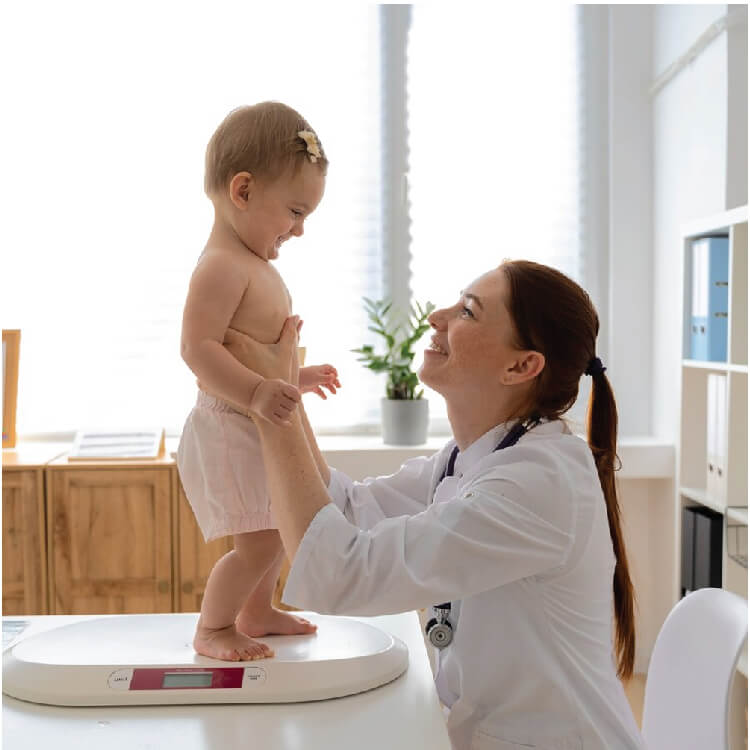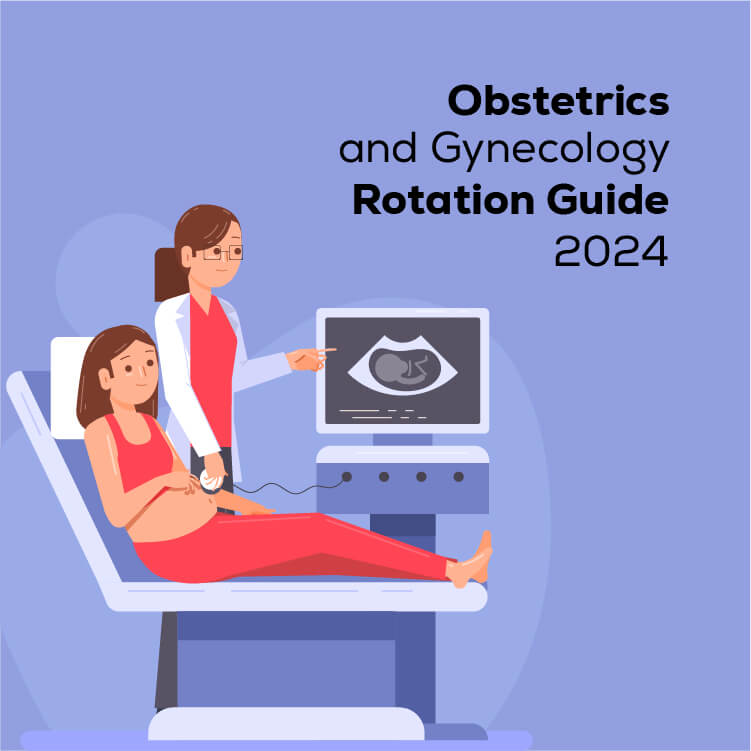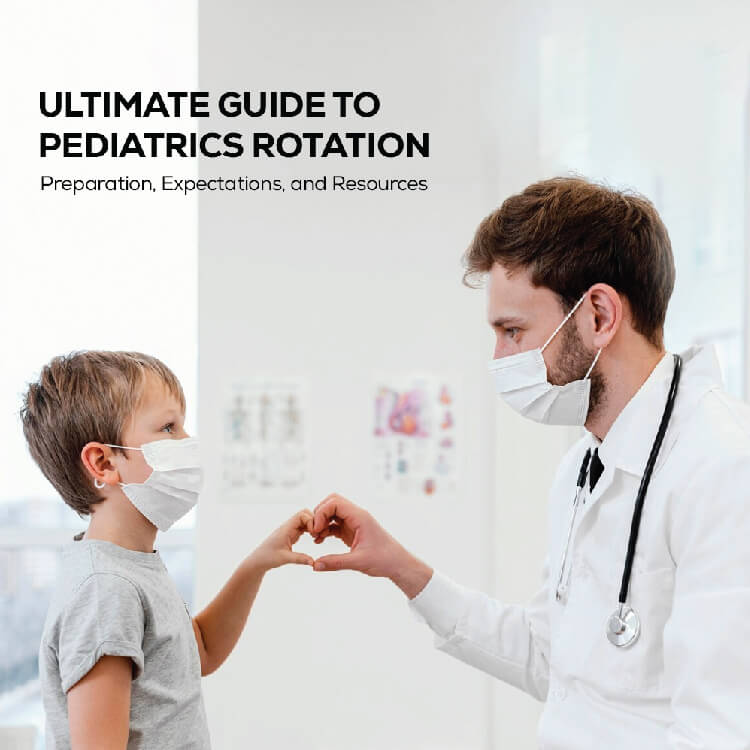
Pediatrics Rotation is an essential component of medical education, providing students with firsthand experience in pediatric clinical settings. This guide offers comprehensive insights into Pediatrics Rotation, including its definition, application process, expectations, common rotations, preparation tips, resources, and FAQs.
What is Pediatrics Rotation?
Pediatrics Rotation is a fundamental part of medical education. It is fundamentally a 4 to 8-week-long rotation. Pediatrics is a highly preferred profession in the industry. There are over 10,037 pediatricians currently employed in the United States. Students gain practical experience in pediatric healthcare settings. It involves immersion in outpatient clinics, inpatient wards, NICUs, PICUs, and pediatric emergency departments. The rotation aims to familiarize students with the medical, developmental, and social needs of children from infancy to adolescence. Under the guidance of experienced pediatricians, students learn to assess, diagnose, and manage pediatric conditions while emphasizing effective communication with patients and their families. It is structured to equip future physicians with the skills and knowledge necessary to provide compassionate and competent care to pediatric patients.
When Should I Start Applying for a Pediatrics Clerkship?
Determining the timing of your pediatric clinical rotation experience depends on whether you intend to pursue it as a specialty. For those aiming for pediatrics as their specialty, it’s strategic to schedule it as the second or third rotation out of the total four quarters of the year. Avoid placing it at the end if you’re serious about pursuing pediatrics.
This approach ensures you have a foundational experience before entering the rotations you’re most passionate about. Starting with pediatrics when you’re still adjusting to third-year clerkships might not showcase your abilities effectively. Additionally, not placing it last allows you to gather enough references for applying to away rotations and residency programs. Given the supportive environment of pediatric rotation experience, it provides an excellent opportunity to work on improving any skills you wish to enhance.
What to Expect from Pediatrics Rotation?
Pediatrics Rotation offers medical students a diverse and enriching clinical experience focused on the healthcare needs of infants, children, and adolescents. Here’s a detailed overview of what students can expect during their Pediatrics Rotation:
1. Clinical Exposure: Pediatrics Rotation provides hands-on experience in various pediatric healthcare settings, including outpatient clinics, inpatient wards, neonatal and pediatric intensive care units (NICU/PICU), and pediatric emergency departments. Students interact with pediatric patients of different ages, backgrounds, and medical conditions, gaining exposure to a wide range of cases.
2. Patient Assessment: During Pediatrics Rotation, students learn to perform comprehensive pediatric assessments, including developmental assessments, growth monitoring, and physical examinations tailored to different age groups. They acquire skills in obtaining medical histories, conducting focused physical exams, and interpreting findings relevant to pediatric diagnosis and management.
3. Diagnosis and Management: One of the goals for pediatric clinical rotation is for medical students to develop proficiency in diagnosing and managing common pediatric conditions, such as respiratory infections, gastroenteritis, asthma, and dermatological conditions. They also encounter more complex cases, including chronic illnesses, congenital anomalies, and developmental disorders, learning to formulate differential diagnoses and develop treatment plans.
4. Patient Communication: Effective communication with pediatric patients and their families is a cornerstone of Pediatrics Rotation. Students learn to communicate medical information in a clear, age-appropriate manner, while also addressing the emotional and psychosocial needs of pediatric patients and their caregivers. They develop skills in building rapport, eliciting concerns, and providing empathetic support to families facing challenging medical situations.
5. Preventive Care and Health Promotion: Pediatrics Rotation emphasizes the importance of preventive care and health promotion in pediatric medicine. Students learn about immunization schedules, anticipatory guidance, and screening recommendations for pediatric patients. They participate in well-child visits, discussing topics such as nutrition, growth and development, safety, and behavioral health with patients and families.
6. Professional Development: Beyond clinical skills, Pediatrics Rotation fosters students’ professional development and professionalism. They learn about ethical considerations in pediatric care, patient advocacy, and cultural competence.
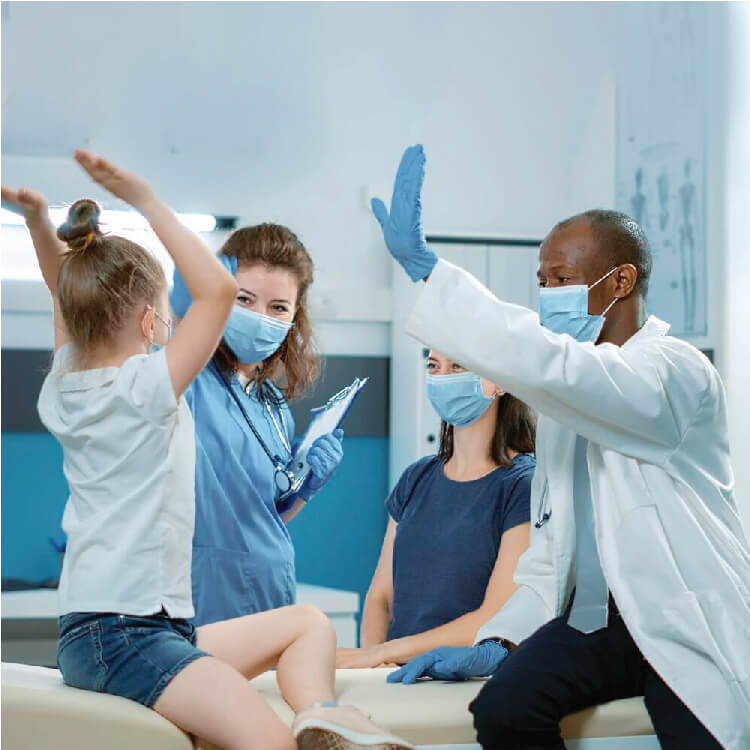
Most Common Pediatrics Rotation
The most common Pediatrics Rotation settings where medical students gain clinical experience include:
1. General Pediatric Wards: In this setting, students care for pediatric patients admitted to the hospital for various medical conditions, such as respiratory infections, dehydration, asthma exacerbations, and febrile illnesses. They participate in daily rounds, assist in patient assessments, and collaborate with the healthcare team in managing patients’ care plans.
2. Pediatric Intensive Care Unit (PICU): The PICU provides care for critically ill pediatric patients requiring advanced monitoring and interventions. Medical students gain exposure to managing complex medical and surgical conditions, such as respiratory failure, sepsis, trauma, and neurological emergencies. They assist in procedures, interpret diagnostic tests, and participate in multidisciplinary rounds.
3. Neonatal Intensive Care Unit (NICU): In the NICU, students care for newborn infants with prematurity, respiratory distress syndrome, congenital anomalies, and other neonatal conditions. They learn about neonatal resuscitation, respiratory support, feeding management, and developmental care under the supervision of neonatologists and neonatal nurses.
4. Pediatric Outpatient Clinics: Outpatient clinics provide opportunities for students to participate in well-child visits, follow-up appointments, and consultations for pediatric patients with various acute and chronic conditions. They learn about preventive care, growth and development monitoring, and anticipatory guidance while collaborating with pediatricians and allied health professionals.
5. Pediatric Emergency Department: In the pediatric emergency department, students encounter acute pediatric presentations, including respiratory distress, trauma, dehydration, and fever. They learn to perform rapid assessments, initiate stabilization measures, and prioritize patient care under time-sensitive conditions. They also gain exposure to pediatric procedural skills, such as intravenous access and wound management.
How to Prepare for the Pediatric Rotation?
Pediatrics Rotation offers medical students a unique opportunity to engage with pediatric patients and their families, encompassing clinical care and social considerations. To excel in this rotation, here are some valuable preparation tips:
1. Understand Presentation Format: Familiarize yourself with the format for presenting pediatric cases, which may resemble that of Internal Medicine rotations. However, be mindful of specific pediatric elements such as pregnancy history, neonatal history, immunization status, developmental milestones, and environmental factors.
2. Know Developmental Milestones: Acquaint yourself with age-appropriate developmental milestones, as they play a crucial role in assessing pediatric patients during clinic visits and exams.
3. Study Concurrently: Pediatrics rotations often include both outpatient and inpatient blocks, each highlighting different aspects of pediatric practice. Study patient complaints and management strategies concurrently with your clinical experience, utilizing review texts and practice questions to reinforce learning. We talk about study tips and resources further in this blog.
4. Carry Distraction Items: Consider carrying items like silly stuffed animal keychains for your stethoscope or stickers and lollipops to distract and engage pediatric patients during examinations. Building rapport and making the experience positive can enhance your clinical interactions.
5. Utilize Parental Support: Involve parents in the examination process by having them assist in positioning the child or providing comfort during procedures. Learning to examine children while they are seated on their parent’s lap can facilitate cooperation and ease anxiety.
6. Engage with Patients: After completing clinical tasks and rounding, spend additional time engaging with patients and families. Play games, offer support, and be a positive presence during their hospital stay. Your interactions can have a profound impact on the child’s experience and outlook.
Pediatrics Rotation Resources to Study
When preparing for Pediatrics Rotation, utilizing the best resources available can greatly enhance your learning experience and performance. Here are some recommended resources tailored to help you succeed:
1. Textbooks: Utilize comprehensive textbooks that cover a wide range of pediatric topics. Some of the best books for Pediatrics Rotation include Nelson Textbook of Pediatrics by Robert M. Kliegman et al., Pediatric Clerkship Guide by American Academy of Pediatrics (AAP), and Blueprints Pediatrics by Bradley S. Marino and Katie S. Fine. These textbooks provide in-depth coverage of pediatric conditions, diagnosis, and management strategies.
2. Online Platforms: Explore online platforms that offer interactive learning resources and case studies. Websites like UpToDate, PedsCases, and Osmosis provide evidence-based information, clinical guidelines, and multimedia content to supplement your textbook learning. These platforms are valuable for reviewing key concepts and testing your knowledge with practice questions.
3. Review Books: Consider using the best books for Pediatrics Rotation preparation. Titles like First Aid for the Pediatrics Clerkship by Latha G. Stead and Matthew S. Kaufman offer concise summaries, high-yield information, and practice questions to reinforce your understanding of pediatric topics.
4. Clinical Guidelines: Familiarize yourself with current clinical guidelines and protocols relevant to pediatric practice. Best resources for pediatrics rotation such as the AAP’s “Bright Futures Guidelines” and the Centers for Disease Control and Prevention (CDC) immunization schedules provide essential recommendations for preventive care, growth monitoring, and immunization practices in pediatric patients.
5. Pediatric Clerkship Guidebooks: Explore guidebooks specifically tailored to pediatric clerkships, offering practical tips, study strategies, and advice for succeeding in clinical rotations. Also, stock up on pediatric clerkship books.
6. Pediatric Away Rotations: Consider participating in pediatric away rotations to gain exposure to different healthcare systems, patient populations, and clinical practices. While not mandatory, away rotations can broaden your clinical experience, build professional connections, and strengthen your residency applications.
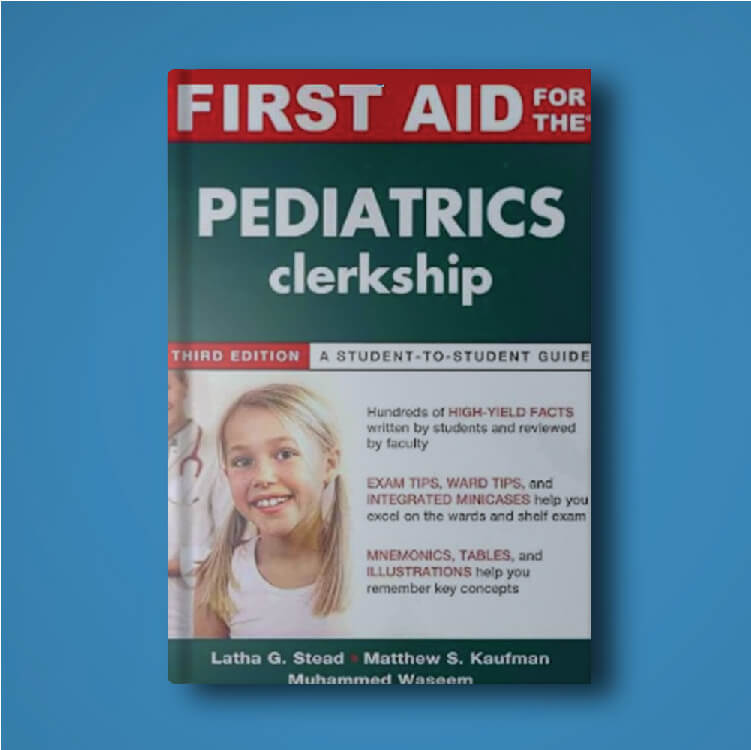
How to Clear the Pediatrics Rotation Shelf Exam?
To excel in the Pediatrics Rotation Shelf Exam, it’s crucial to start preparing early and focus on high-yield topics such as growth and development milestones, common childhood illnesses, and pediatric emergencies. Utilize a variety of study resources, including textbooks, online platforms, and practice questions, to reinforce your understanding of pediatric concepts. Create a structured study plan and actively engage in patient care during clinical rotations to apply your knowledge in real-life scenarios. Seek feedback from preceptors to improve your clinical skills and incorporate their suggestions into your study routine. Practice time management during the exam to ensure you can answer all questions within the allotted time. With thorough preparation and a systematic approach, you can increase your chances of success on the Pediatrics Rotation Shelf Exam.
Frequently Asked Questions – FAQs
Away rotations can provide valuable exposure to different healthcare systems and patient populations, but they are not mandatory for success in Pediatrics Rotation. The significance of away rotations may vary depending on individual career goals and residency program preferences. Consultation with your pediatric advisor can help determine whether participating in away rotations aligns with your professional aspirations
According to US News rankings, top medical schools for pediatrics include Johns Hopkins University, Harvard University, and Stanford University. These institutions are renowned for their excellence in pediatric medical education, research, and clinical care. However, the choice of the best school for pediatrics may depend on individual preferences, career goals, and geographical considerations.
The duration of the average Pediatrics Rotation varies among medical schools, but it typically ranges from 4 to 8 weeks. The length of the rotation may depend on the medical school’s curriculum, scheduling constraints, and educational objectives. Students should check with their institution to determine the exact duration of their Pediatrics Rotation.
Conclusion
Pediatrics Rotation is a vital component of medical education that offers students invaluable opportunities to immerse themselves in the care of pediatric patients. Through clinical exposure in various settings such as outpatient clinics, inpatient wards, and emergency departments, students gain essential skills in patient assessment, diagnosis, and management, while also honing their communication and interpersonal abilities.
By utilizing resources effectively, preparing diligently, and seeking guidance from experienced mentors, students can navigate Pediatrics Rotation successfully and lay a solid foundation for their future careers in pediatric medicine

